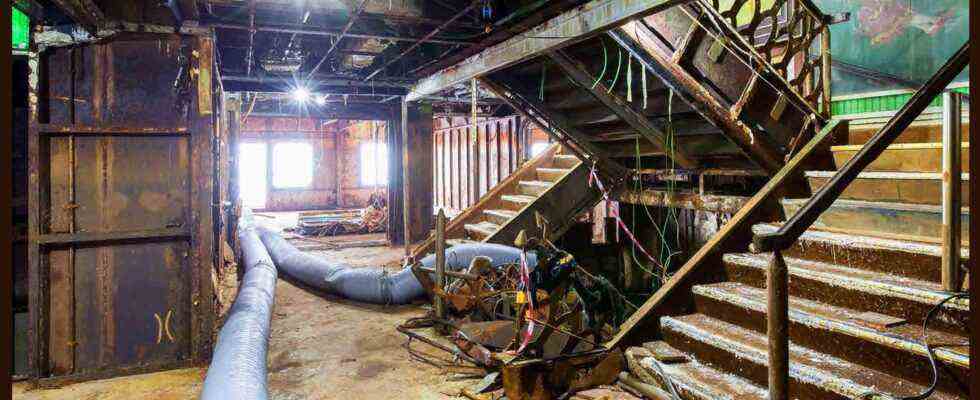The photographer Jonathan Danko Kielkowski specializes in architecture. But he not only photographs finished buildings, but also documents demolition work, bunkers and industrial ruins such as the former coal mines on Spitsbergen.
At the end of August 2014 he went to an unreal place in the port of Genoa: the ghost ship “Costa Concordia” had been towed to the Italian port city to be scrapped a few weeks earlier after an extensive rescue operation off the island of Giglio in the Mediterranean.
“The destroyed cruise ship is visible and attracts me like a magnet, so that I finally dare to swim over,” says Kielkowski. “Against all odds, I find the shipwreck freely accessible – neither fences nor security personnel! The doors are open, the lights are on, no one around.” An invitation for a photographer who, with his unique shots, shows us that a cruise can turn into a nightmare even in the 21st century: 32 people lost their lives in the ship disaster.
Kielkowski’s unreal images of decay appeared in a photo book that was published on February 11, 2016 at the LA Art Book Fair in the Museum of Contempory Art (MOCA) was officially presented. The lavishly designed illustrated book “Concordia” was at White Press Relocated in Freiburg.
Film shooting by Jean-Luc Godard on the “Concordia”
In the foreword of the book, Christoph Schaden refers to the fact that not only the “Titanic” has found its way into film history, but also the “Costa Concordia”. In 2010, director Jean-Luc Godard shot on the luxury liner and had his protagonist say with the camera “Why the light? Because of the darkness” – an allusion to the sinking of the “Titanic” in 1912.
“While filming, Jean-Luc Godard could not have known that the cruise ship he had chosen as the backdrop for his film would mutate into a real disaster two years later. In fact, the first movement of his symphony ‘Film Socialisme’ played on the ‘Costa Concordia’, the luxury liner that crashed off the Tuscan island of Giglio on the evening of January 13, 2012. “
Fear and panic reigned on board at the time. “With the news tickers of the misfortune, the allegory machine started immediately in the mass media,” writes Schaden. “The question of what importance should be attached to the shipwreck was discussed in a reflexive manner. Wasn’t a turning point here, did it mean the end of our epoch?”
“SS United States”: America’s forgotten flagship rusts in Philadelphia
17 images
It is well known that after Captain Schettino’s navigation error, the “Costa Concordia” lay in an inclined position on a rock for a year and a half before the rusty steel colossus could be straightened up again and later towed away. But before that, the Costa shipping company had the distinctive yellow chimney with the “C” removed in the hope of not damaging the brand’s reputation any further.
However, Helge Schlaghecke, the publisher of the illustrated book “Concordia”, did not want to trace a disaster scenario. He pointed out that the illustrated book is “expressly dedicated to the more than 4,000 survivors, 32 deceased, their friends and relatives.”

